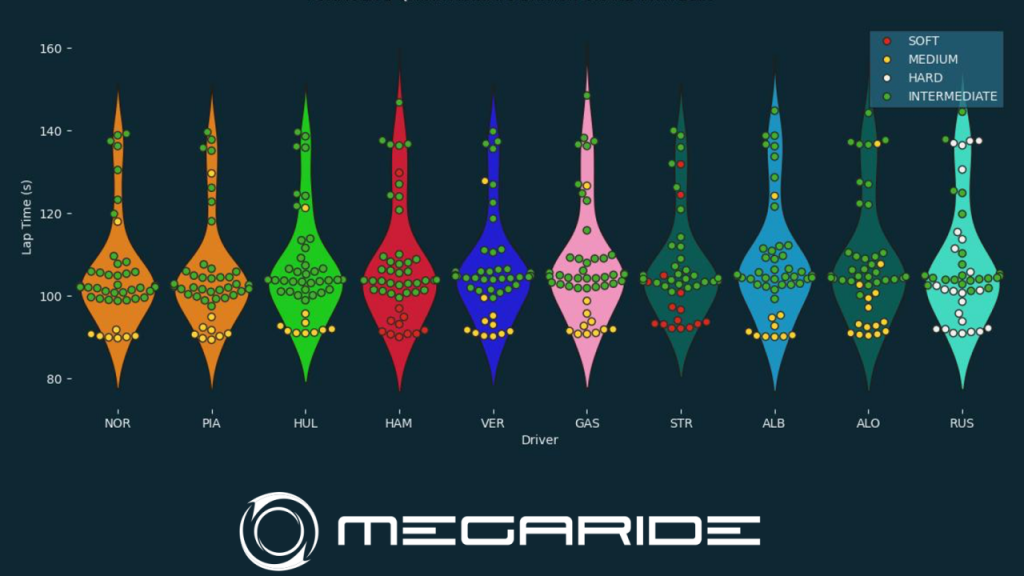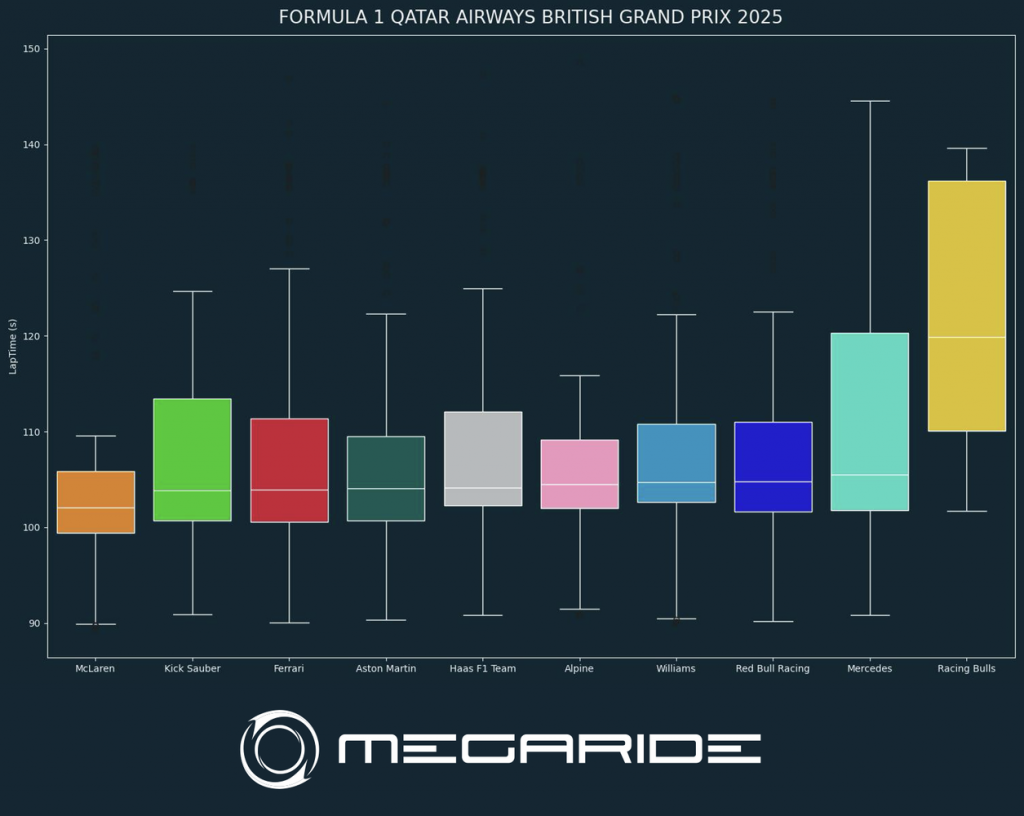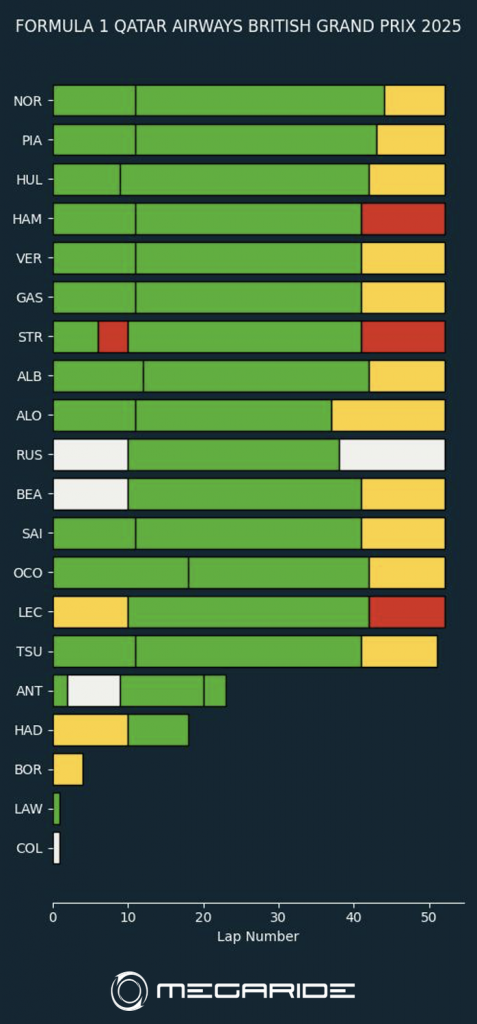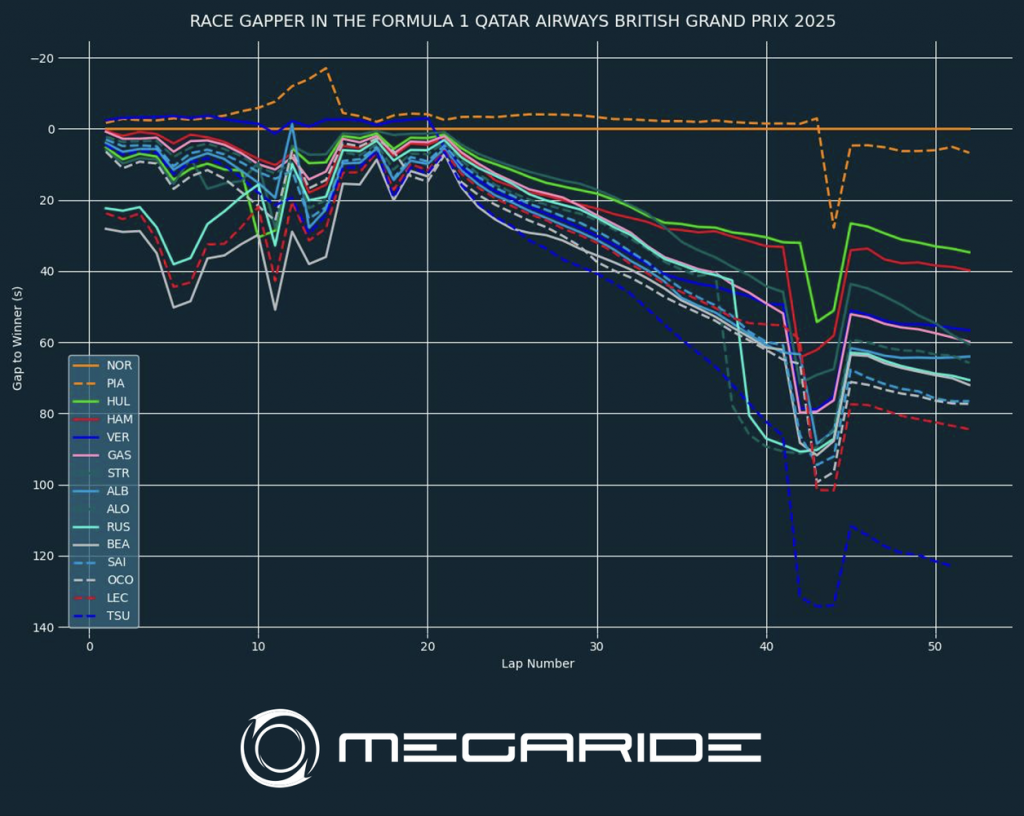
General overview
A historic British GP that marked McLaren’s return to success at its home track with yet another one-two win of the season has just gone down in the archives. Triumphing was crowd favorite Lando Norris, who took the top step of the podium ahead of teammate Oscar Piastri. The Australian, penalized for a maneuver deemed irregular under a Safety Car regime, saw a victory he had legitimized on the track fade away.
But the most surprising fact is undoubtedly the third place of Nico Hülkenberg in Sauber, who started even 19th: it was his first career podium and the first for the Swiss team after more than 13 years. A comeback built with intelligence, pace, and coolness in the finale, even resisting Hamilton’s attacks.
On the other hand, it was a day to forget for McLaren’s main rivals: Verstappen, author of a masterful pole on Saturday, lost several positions due to a mistake and finished only fifth, while Hamilton was never really able to trouble Hülkenberg, settling for fourth place. Badly for the Mercedes: Antonelli was forced to retire and Russell, only tenth, paid for a risky strategic choice at the start. The same goes for Leclerc, second to last at the finish: both chose to mount slick tires immediately after the formation lap.
The race was strongly influenced by variable track conditions and several Safety Car and Virtual Safety Car phases, elements that made the real balance on the field less readable. This is also reflected in the data: both violin plot and ranking analysis return a rather compact grid, with close values among most teams. Indeed, the violin plot, which graphically represents the distribution of lap times, shows very similar profiles between them, with one exception in the two McLarens: their graph is slightly more compact and shifted toward lower times, indicating a faster and more consistent pace. However, this is not a macroscopic difference, a sign that the chaotic environment partially masked the real performance.

Race strategy
On the strategy front, the risky decision by some drivers, including Russel and Leclerc, who, after the formation lap, decided to change from intermediate to slick tires, is holding court. The gamble they tried did not pay off, and indeed, they were forced to remount a few laps after the intermediate tires, thus losing the chance to see the gamble pay off. All the others were instead in both the first and second stints on intermediate tires, switching to slicks only in the last part of the race, opting some for soft, some for medium.

Focus on drivers’ lap times
More significantly, however, is the analysis by race gapper, which shows the lap-by-lap gap between each driver and the leader. It is precisely this metric that most accurately photographs McLaren’s dominance: Piastri and Norris, as already seen in Austria, have progressively stretched out over the entire group, with a pace that no one else has been able to approach. The gap curves of the other drivers show a steadily decreasing trend, a clear sign of an insufficient race pace to keep in touch with the papaya cars. Race to be reviewed instead for Verstapen, who, after an incredible pole position on Saturday, due to a mistake, was forced into the back positions, except then managed to make a comeback and hit fifth place. But what is evident is the good level of Hulkenberg’s Sauber, who for the last part of the race managed to have a better pace than those who were chasing him, even managing to avoid being attacked and overtaken by Ferrari’s Briton.

Conclusions
Now Formula 1 will have a break of a couple of weeks, except to return to another historic circuit in late July, at Spa-Franchchamps, for the Belgian Grand Prix, another of the most critical and famous circuits on the entire calendar. The standings shorten at the top, with just a few points separating the two McLaren teammates set to play for the Drivers’ championship.